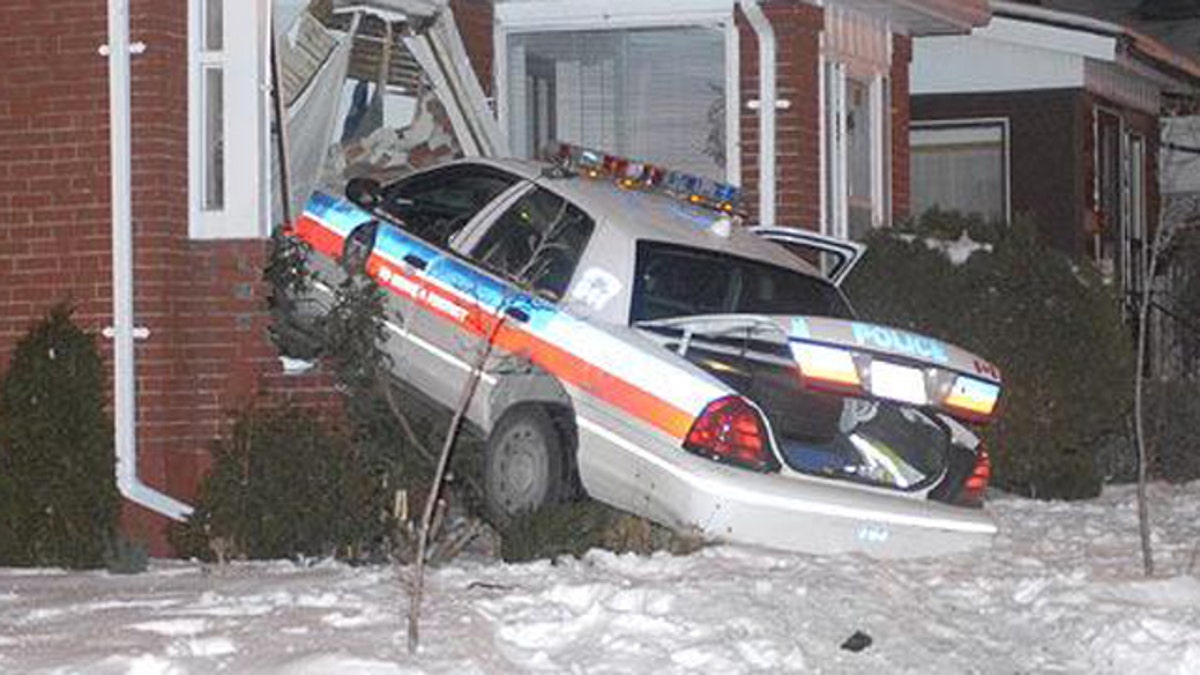
(AP)
Today's vehicles provide much better occupant protection than those of three decades ago. And we've also made tremendous progress in making our roads a bit safer, and in getting people to buckle up.
But, in a puzzling twist it seems, law-enforcement officials are more often perishing in their patrol cars—particularly in single-vehicle crashes—than they used to.
Especially adjusted for vehicle miles traveled, fatalities have been falling sharply ever since 2000. Yet fatality figures for police officers have bucked the trend. Even as overall fatalities in the line of duty fell by about 20 percent, the Insurance Institute for Highway Safety (IIHS) reports in its monthly Status Report newsletter, traffic fatalities for officers climbed.
We're safer, but more officers are dying in crashes
Back in 1980, there were more than 51,000 U.S. traffic fatalities for about 1.53 million vehicles miles traveled (VMT). By 2000, we're cut that down below 42,000, despite driving a lot more (2.75 million VMT). And by 2007, that figure had dropped a bit more, to 41,259, even as total VMT rose to 3.03 (it's since fallen even more, with a slight drop in VMT).
But the news isn't so positive for officers in patrol cars. From 1980 to 1982, vehicle crashes attributed to just 26 percent of all law enforcement deaths, but from 2005 to 2007, 54 percent of officer deaths were traffic fatalities. Fatalities while the officer was on foot or on a motorcycle were relatively unchanged, but deaths in patrol cars spiked.
Up until 2000, Sheriff Magazine reports, in its May-June 2010 issue, that law enforcement traffic deaths were at about the same rate as the general population, but since then the trends have diverged, with the rate for the general population falling and the rate for officers rising markedly.
So is it that police are less trained or more reckless? Are they more likely to be involved in high-speed chases? Or does it have anything to do with the ubiquitous Ford Crown Victoria?
A "click it or ticket" double standard?
Likely, none of the above. The interesting finding from the federal government's Fatality Analysis Reporting System (FARS): Officers themselves aren't buckling up. A surprising 39 percent of officers killed in car crashes since 1996 didn't have their seatbelt fastened. And younger officers might not be doing any better; those aged 20 to 39 account for 69 percent of all fatal crashes, according to Sheriff.
According to the FARS analysis, says Sheriff, 42 percent of fatal law-enforcement officer deaths involve a single-vehicle impact with an object off the road—with the front of the vehicle in 48 percent of crashes. The majority of crashes occurred on a dry, straight, level stretches of roadway. And 24 percent of fatal crashes involved the ejection of the occupant—indicating the seatbelt wasn't fastened.